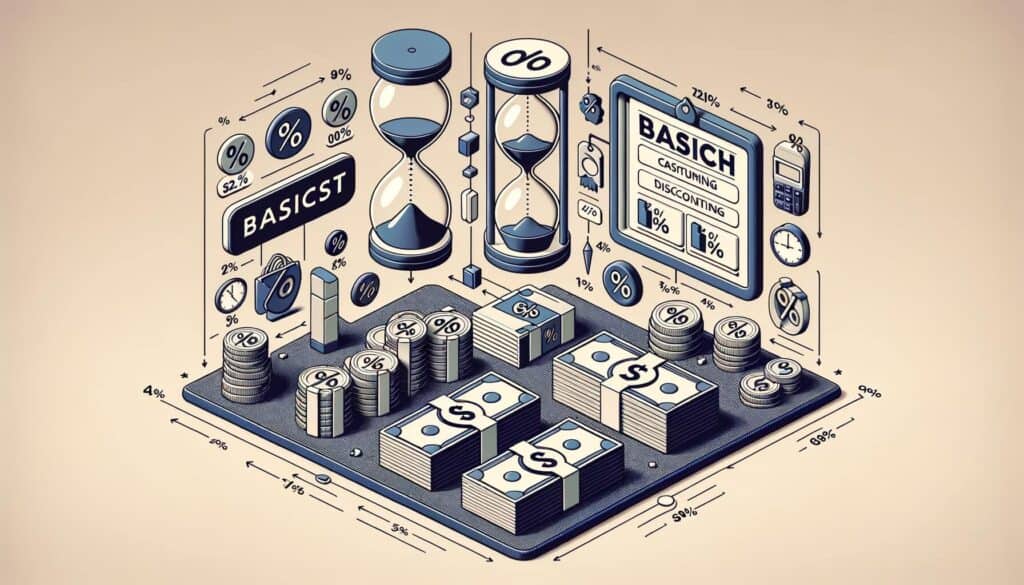
By Cindy Gardea January 13, 2025
Cash discount merchant services programs have gained popularity among businesses as a way to reduce credit card processing fees and increase profitability. These programs allow merchants to pass on the cost of credit card transactions to customers who choose to pay with a card, while offering a discount to those who pay with cash.
In this article, we will explore how cash discount merchant services programs work, their benefits for businesses, the mechanics of cash discounting, and the steps involved in setting up such a program.
Understanding the Basics of Cash Discounting

Cash discounting is a pricing strategy that allows businesses to offset the cost of credit card processing fees by offering a discount to customers who pay with cash. When a customer makes a purchase using a credit card, the merchant adds a small fee to the transaction to cover the cost of processing. However, if the customer chooses to pay with cash, they receive a discount equivalent to the fee that would have been charged.
The concept behind cash discounting is simple: by incentivizing customers to pay with cash, businesses can reduce their reliance on credit card transactions and save on processing fees. This can have a significant impact on a business’s bottom line, especially for those with high volumes of credit card transactions.
How Does a Cash Discount Merchant Services Program Benefit Businesses?
Cash discount merchant services programs offer several benefits to businesses. Firstly, they allow merchants to reduce their credit card processing fees, which can be a significant expense for businesses, especially those with high volumes of credit card transactions. By passing on the cost of processing to customers who choose to pay with a card, businesses can effectively eliminate these fees.
Secondly, cash discounting can help businesses increase their profitability. By offering a discount to customers who pay with cash, businesses can encourage more customers to choose this payment method. This not only saves on processing fees but also reduces the risk of chargebacks and fraudulent transactions associated with credit card payments.
Furthermore, cash discounting can improve cash flow for businesses. Since cash payments do not require processing time or fees, businesses can receive immediate payment for their products or services. This can be particularly beneficial for small businesses or those with tight cash flow.
Exploring the Mechanics of Cash Discounting

The mechanics of cash discounting involve a few key components. Firstly, businesses need to clearly communicate their cash discount policy to customers. This can be done through signage at the point of sale, on the business’s website, or through other marketing materials. The policy should clearly state the discount percentage and any applicable fees for credit card transactions.
When a customer makes a purchase using a credit card, the merchant adds a small fee to the transaction. This fee is typically a percentage of the purchase amount, ranging from 1% to 4%. The fee is then deducted from the total purchase price, and the customer pays the remaining balance.
On the other hand, if a customer chooses to pay with cash, they receive a discount equivalent to the fee that would have been charged. This discount is typically applied at the point of sale, reducing the total purchase price for the customer.
Step-by-Step Guide: Setting Up a Cash Discount Merchant Services Program

Setting up a cash discount merchant services program involves several steps. Here is a step-by-step guide to help businesses navigate the process:
1. Research and choose a cash discount merchant services provider: Start by researching different providers that offer cash discounting solutions. Look for providers that have experience in the industry and offer transparent pricing and reliable customer support.
2. Understand the legal and regulatory requirements: Before implementing a cash discount program, businesses need to understand the legal and regulatory requirements in their jurisdiction. Some states have specific laws regarding cash discounting, so it is important to ensure compliance.
3. Update pricing and signage: Once a provider has been chosen and the legal requirements have been met, businesses need to update their pricing and signage to reflect the cash discount program. This includes clearly displaying the discount percentage and any applicable fees for credit card transactions.
4. Train staff and educate customers: It is important to train staff on the cash discount program and ensure they can effectively communicate the policy to customers. Additionally, businesses should educate customers about the program through signage, website updates, and other marketing materials.
5. Monitor and adjust: After implementing the cash discount program, businesses should monitor its effectiveness and make adjustments as needed. This may include analyzing customer feedback, tracking sales data, and making changes to the discount percentage or fee structure if necessary.
Is Cash Discounting Legal? Understanding the Regulatory Landscape

The legality of cash discounting varies depending on the jurisdiction. In the United States, cash discounting is generally legal, but there are some states that have specific laws regarding its implementation. For example, California and New York have laws that restrict or prohibit cash discounting.
It is important for businesses to understand the legal and regulatory requirements in their jurisdiction before implementing a cash discount program. This may involve consulting with legal counsel or contacting the appropriate regulatory agencies for guidance.
Evaluating the Pros and Cons of Cash Discounting for Merchants
Like any business strategy, cash discounting has its pros and cons. Here are some of the key advantages and disadvantages for merchants to consider:
Pros:
1. Reduced credit card processing fees: Cash discounting allows businesses to pass on the cost of credit card processing to customers, effectively eliminating these fees.
2. Increased profitability: By incentivizing customers to pay with cash, businesses can reduce their reliance on credit card transactions and increase their profitability.
3. Improved cash flow: Cash payments do not require processing time or fees, allowing businesses to receive immediate payment for their products or services.
Cons:
1. Potential customer dissatisfaction: Some customers may be unhappy with the idea of paying a fee for using a credit card, which could lead to negative reviews or loss of business.
2. Legal and regulatory considerations: Businesses need to ensure they are compliant with the legal and regulatory requirements in their jurisdiction before implementing a cash discount program.
3. Implementation and training: Setting up a cash discount program requires updating pricing, signage, and training staff, which can be time-consuming and may require additional resources.
Tips for Implementing and Maximizing the Success of a Cash Discount Program
Implementing a cash discount program successfully requires careful planning and execution. Here are some tips to help businesses maximize the success of their program:
1. Choose the right provider: Research different cash discount merchant services providers and choose one that offers transparent pricing, reliable customer support, and a user-friendly platform.
2. Clearly communicate the program to customers: Use signage, website updates, and other marketing materials to clearly communicate the cash discount program to customers. Make sure the discount percentage and any applicable fees are prominently displayed.
3. Train staff effectively: Provide comprehensive training to staff members on the cash discount program, including how to explain it to customers and address any questions or concerns.
4. Monitor and adjust: Regularly monitor the effectiveness of the cash discount program and make adjustments as needed. This may include analyzing sales data, gathering customer feedback, and making changes to the discount percentage or fee structure if necessary.
5. Educate customers about the benefits: Highlight the benefits of paying with cash, such as the discount and the potential for faster service or reduced risk of fraud. This can help incentivize more customers to choose cash over credit cards.
FAQs
Q1. What is a cash discount merchant services program?
A cash discount merchant services program is a pricing strategy that allows businesses to offset the cost of credit card processing fees by offering a discount to customers who pay with cash.
Q2. How does cash discounting work?
When a customer makes a purchase using a credit card, the merchant adds a small fee to the transaction to cover the cost of processing. However, if the customer chooses to pay with cash, they receive a discount equivalent to the fee that would have been charged.
Q3. Is cash discounting legal?
Cash discounting is generally legal in the United States, but there are some states that have specific laws regarding its implementation. It is important for businesses to understand the legal and regulatory requirements in their jurisdiction before implementing a cash discount program.
Q4. What are the benefits of cash discounting for businesses?
Cash discounting allows businesses to reduce their credit card processing fees, increase profitability, and improve cash flow. It also reduces the risk of chargebacks and fraudulent transactions associated with credit card payments.
Q5. How can businesses implement a cash discount program?
To implement a cash discount program, businesses need to research and choose a cash discount merchant services provider, understand the legal and regulatory requirements, update pricing and signage, train staff, and monitor and adjust the program as needed.
Conclusion
Cash discount merchant services programs offer businesses a way to reduce credit card processing fees, increase profitability, and improve cash flow. By incentivizing customers to pay with cash, businesses can effectively eliminate the cost of credit card transactions.
However, it is important for businesses to understand the legal and regulatory requirements in their jurisdiction and carefully plan and execute their cash discount program. With the right provider, clear communication, effective training, and ongoing monitoring, businesses can successfully implement and maximize the success of their cash discount program.
